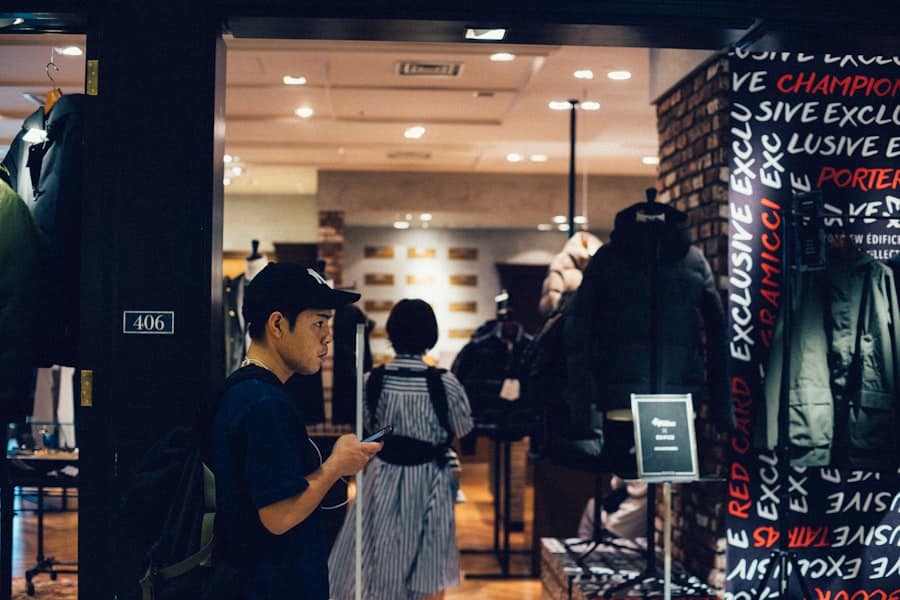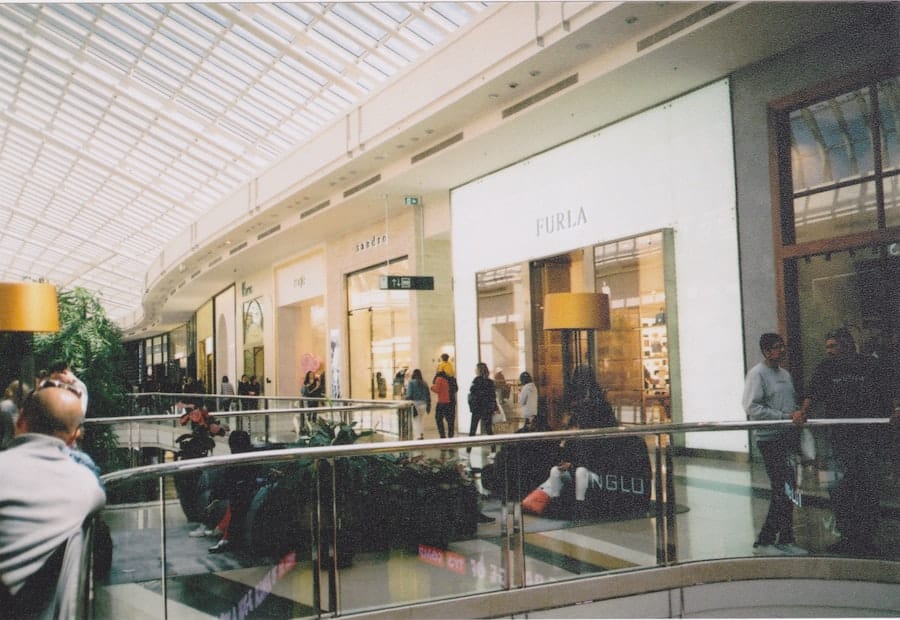Virtual Reality (VR) has emerged as a transformative technology in various sectors, and retail is no exception. The integration of VR into the retail landscape is reshaping how consumers interact with brands, products, and shopping environments. By creating immersive experiences that transcend traditional shopping methods, VR offers retailers a unique opportunity to engage customers in ways that were previously unimaginable.
This technology allows shoppers to explore virtual stores, try on products, and even visualize how items would look in their own homes, all from the comfort of their own space. The evolution of VR technology has been rapid, driven by advancements in hardware and software that have made it more accessible and affordable for businesses. Retailers are increasingly recognizing the potential of VR to enhance customer engagement, streamline operations, and ultimately drive sales.
As consumers become more accustomed to digital experiences, the demand for innovative shopping solutions continues to grow. This article delves into the multifaceted role of VR in retail, exploring its benefits, real-world applications, challenges, and future trends.
Key Takeaways
- VR in retail is revolutionizing the way shoppers engage with brands and products, offering immersive and interactive experiences.
- Benefits of VR for shopper engagement include increased customer satisfaction, higher conversion rates, and improved brand loyalty.
- A case study on the implementation of VR in retail showcases how a major retailer saw a significant increase in sales and customer engagement after introducing VR technology.
- VR has a positive impact on customer experience by providing a personalized and memorable shopping experience, leading to higher customer retention and repeat purchases.
- Challenges and limitations of VR in retail include high implementation costs, technical limitations, and the need for continuous innovation to keep up with consumer expectations.
Benefits of VR for Shopper Engagement
One of the most significant advantages of VR in retail is its ability to create engaging and interactive shopping experiences. Unlike traditional shopping methods, which can often feel monotonous or uninspiring, VR immerses customers in a dynamic environment where they can explore products in a three-dimensional space. This level of engagement not only captures attention but also fosters a deeper emotional connection between the consumer and the brand.
For instance, a customer can virtually walk through a store, interact with products, and receive personalized recommendations based on their preferences. Moreover, VR can significantly enhance product visualization. In sectors such as furniture or home decor, customers often struggle to envision how a product will fit into their living space.
With VR, retailers can offer virtual showrooms where customers can see how different items look together in a simulated environment. This capability not only aids decision-making but also reduces the likelihood of returns, as customers are more informed about their purchases. The immersive nature of VR also allows for storytelling; brands can create narratives around their products that resonate with consumers on a personal level, further enhancing engagement.
Case Study: Implementation of VR in Retail

A notable example of VR implementation in retail is IKEA’s use of the IKEA Place app, which leverages augmented reality (AR) and VR technologies to enhance the shopping experience. This app allows customers to visualize how furniture will look in their homes by placing 3D models of products in their actual living spaces through their smartphones. While primarily an AR application, it exemplifies the principles of immersive shopping experiences that VR can offer.
Another compelling case is that of Lowe’s, which has integrated VR into its customer service strategy through its “Holoroom How To” initiative. This program provides customers with virtual training sessions on home improvement projects. Users can don VR headsets and engage in simulated tasks such as tiling a bathroom or installing a light fixture.
This hands-on experience not only empowers customers with practical skills but also builds confidence in their ability to undertake DIY projects. By offering such innovative solutions, Lowe’s has positioned itself as a forward-thinking retailer that prioritizes customer education and engagement.
Impact of VR on Customer Experience
The impact of VR on customer experience is profound and multifaceted. By providing an immersive shopping environment, retailers can significantly enhance the overall satisfaction of their customers. The ability to interact with products in a virtual space allows consumers to make more informed purchasing decisions, leading to increased confidence and reduced buyer’s remorse.
Furthermore, the novelty of VR experiences can create excitement around a brand, encouraging customers to share their experiences on social media and generate organic marketing buzz. Additionally, VR can cater to diverse consumer needs by offering personalized experiences. Retailers can collect data on customer preferences and behaviors to tailor virtual environments accordingly.
For example, a fashion retailer could create a virtual fitting room where customers can try on clothes that match their style profile or body type.
Challenges and Limitations of VR in Retail
Despite its numerous advantages, the implementation of VR in retail is not without challenges. One significant barrier is the cost associated with developing and maintaining VR technology. High-quality VR experiences require substantial investment in hardware, software development, and ongoing updates to keep content fresh and engaging.
For many retailers, especially smaller businesses, these costs can be prohibitive. Moreover, there is a learning curve associated with adopting new technologies like VR. Retail staff must be trained to assist customers effectively in virtual environments, which can require additional resources and time.
Additionally, not all consumers are comfortable with or have access to VR technology. While younger generations may embrace these innovations readily, older consumers or those less tech-savvy may find it daunting or unnecessary. This disparity can create challenges in ensuring that all customer segments are adequately served.
Future Trends and Innovations in VR for Retail

As technology continues to evolve, the future of VR in retail holds exciting possibilities. One emerging trend is the integration of artificial intelligence (AI) with VR experiences. AI can analyze customer data to create hyper-personalized shopping experiences within virtual environments.
Another promising innovation is the development of social shopping experiences within VR platforms. As social media continues to influence consumer behavior, retailers are exploring ways to create shared virtual shopping experiences where friends can shop together from different locations.
This could involve virtual hangouts where users can browse products together, share opinions in real-time, and even make joint purchases. Such innovations could redefine social interactions around shopping and create new avenues for customer engagement.
Best Practices for Retailers Using VR
For retailers looking to implement VR technology effectively, several best practices can guide their efforts. First and foremost, it is essential to prioritize user experience when designing virtual environments. The interface should be intuitive and easy to navigate to ensure that customers feel comfortable exploring the space without frustration.
Conducting user testing during the development phase can provide valuable insights into how real customers interact with the technology. Additionally, retailers should focus on creating content that adds value rather than simply showcasing products. Engaging storytelling or educational elements can enhance the overall experience and keep customers coming back for more.
For example, incorporating tutorials or interactive elements that allow users to learn about product features can elevate the shopping experience beyond mere transactions. Finally, retailers should consider integrating feedback mechanisms within their VR platforms to gather insights from users about their experiences. This feedback can inform future updates and improvements, ensuring that the technology evolves alongside customer expectations.
The Future of VR in Retail
The future of VR in retail is poised for significant growth as technology continues to advance and consumer preferences shift towards more immersive experiences. As retailers embrace this innovative medium, they have the opportunity to redefine how customers interact with brands and products. By leveraging the unique capabilities of VR—such as enhanced engagement, personalized experiences, and immersive storytelling—retailers can create memorable shopping journeys that resonate with consumers on multiple levels.
While challenges remain in terms of cost and accessibility, the potential benefits far outweigh these obstacles for those willing to invest in this transformative technology. As we look ahead, it is clear that VR will play an increasingly vital role in shaping the retail landscape, offering exciting opportunities for both retailers and consumers alike. The journey into this new frontier has just begun, and those who adapt quickly will likely lead the way in redefining retail experiences for years to come.
In the rapidly evolving retail landscape, the integration of virtual reality (VR) is proving to be a game-changer for enhancing shopper engagement. The case study “Retailers Using VR to Boost Shopper Engagement” highlights how retailers are leveraging VR technology to create immersive shopping experiences that captivate consumers. A related article that delves into the technological advancements supporting such innovations is The Best Laptops for Video and Photo Editing. This article discusses the importance of high-performance laptops in creating and editing the high-quality visual content necessary for VR applications, underscoring the synergy between cutting-edge hardware and immersive retail solutions.
FAQs
What is VR and how is it used in retail?
VR, or virtual reality, is a technology that uses computer-generated simulations to create a realistic experience. In retail, VR is used to create immersive shopping experiences for customers, allowing them to virtually explore products and interact with the store environment.
How do retailers use VR to boost shopper engagement?
Retailers use VR to create interactive and engaging experiences for shoppers, such as virtual product demonstrations, 360-degree store tours, and virtual fitting rooms. This technology allows customers to experience products and the store environment in a more immersive way, leading to increased engagement and potential sales.
What are the benefits of using VR in retail?
Using VR in retail can provide several benefits, including increased customer engagement, improved brand perception, and the ability to showcase products in a unique and interactive way. VR can also help retailers gather valuable data and insights about customer behavior and preferences.
Are there any challenges or limitations to using VR in retail?
Some challenges of using VR in retail include the cost of implementing the technology, the need for staff training, and potential technical issues. Additionally, not all customers may be comfortable or familiar with VR technology, which could limit its effectiveness in certain demographics.

